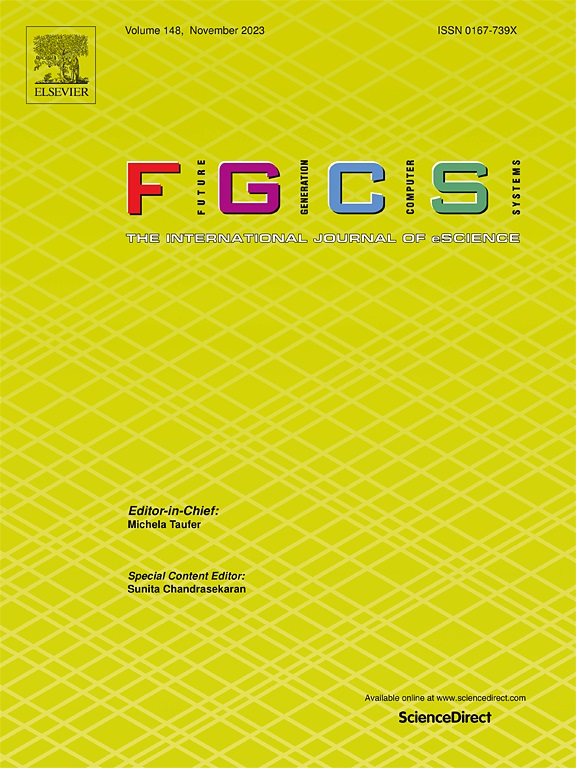Cross-platform and polyhedral programming for Nussinov RNA folding
IF 6.2
2区 计算机科学
Q1 COMPUTER SCIENCE, THEORY & METHODS
Future Generation Computer Systems-The International Journal of Escience
Pub Date : 2025-03-03
DOI:10.1016/j.future.2025.107786
引用次数: 0
Abstract
This article addresses the use of codes from polyhedral compilers with tiled and parallel code designed for CPU processors, automatically generated as source-to-source OpenMP for NVIDIA GPU graphics cards using CUDA. In previous publications, we demonstrated that it is possible to use large language models (LLM) to translate code, generate kernels, and correctly manage memory transfers between the host and the device without manual effort. Unfortunately, when the target architecture is not taken into account in detail, the performance of code designed for CPUs leaves much to be desired when running on GPUs. The architectural differences between these two platforms like cores, cache, and the dimensionality of computations require careful attention to performance portability. In this article, we address the Nussinov algorithm, a popular benchmark in bioinformatics, to achieve higher performance on the NVIDIA platform than automatically generated codes by LLM. Nussinov’s loop nests are a non-trivial kernel from the non-serial polyadic dynamic programming (NPDP) benchmark with non-uniform loops. We will utilize a polyhedral code framework that tiles and then manually modifies the most nested loop nest containing the majority of the computations, using the two-dimensional thread blocks. To accelerate the computations, shared memory within blocks is utilized. The resulting codes were tested on two modern NVIDIA devices for various RNA sequence lengths, compared to parallel and tiled CPU codes, and previously generated Nussinov’s GPU codes using LLMs. The correctness of these codes and their scalability were analyzed. Comparison to related approaches and future work are outlined.
Nussinov RNA折叠的跨平台和多面体编程
本文讨论了多面体编译器代码的使用,这些代码带有为CPU处理器设计的平铺并行代码,这些代码使用CUDA自动生成为NVIDIA GPU图形卡的源代码到源代码的OpenMP。在以前的出版物中,我们证明了可以使用大型语言模型(LLM)来翻译代码、生成内核并正确管理主机和设备之间的内存传输,而无需手动操作。不幸的是,如果没有详细考虑目标体系结构,那么在gpu上运行时,为cpu设计的代码的性能就有很大的不足。这两个平台之间的架构差异(如核心、缓存和计算维度)需要仔细注意性能可移植性。在本文中,我们讨论了Nussinov算法(生物信息学中流行的基准算法),以在NVIDIA平台上实现比LLM自动生成代码更高的性能。Nussinov的循环巢是来自非均匀循环的非串行多进动态规划(NPDP)基准的非平凡核。我们将使用一个多面体代码框架,使用二维线程块,对包含大多数计算的最嵌套的循环巢进行平铺,然后手动修改。为了加速计算,使用块内的共享内存。结果代码在两个现代NVIDIA设备上进行了各种RNA序列长度的测试,与并行和平摊CPU代码进行了比较,并使用llm生成了Nussinov的GPU代码。分析了这些代码的正确性和可扩展性。对相关方法进行了比较,并对今后的工作进行了概述。
本文章由计算机程序翻译,如有差异,请以英文原文为准。
求助全文
约1分钟内获得全文
求助全文
来源期刊
CiteScore
19.90
自引率
2.70%
发文量
376
审稿时长
10.6 months
期刊介绍:
Computing infrastructures and systems are constantly evolving, resulting in increasingly complex and collaborative scientific applications. To cope with these advancements, there is a growing need for collaborative tools that can effectively map, control, and execute these applications.
Furthermore, with the explosion of Big Data, there is a requirement for innovative methods and infrastructures to collect, analyze, and derive meaningful insights from the vast amount of data generated. This necessitates the integration of computational and storage capabilities, databases, sensors, and human collaboration.
Future Generation Computer Systems aims to pioneer advancements in distributed systems, collaborative environments, high-performance computing, and Big Data analytics. It strives to stay at the forefront of developments in grids, clouds, and the Internet of Things (IoT) to effectively address the challenges posed by these wide-area, fully distributed sensing and computing systems.

 求助内容:
求助内容: 应助结果提醒方式:
应助结果提醒方式:


